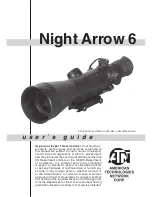
3
Telescope Terms To Know:
Diagonal: A mirror that deflects the ray of light 90 degrees.
With a horizontal telescope tube, this device deflects the light upwards so
that you can comfortably observe by looking downwards into the eyepiece.
The image in a diagonal mirror appears upright, but rotated around its
vertical axis (mirror image).
Focal length: Everything that magnifies an object via an optic lens has a certain focal length. The focal length is the
length of the path the light travels from the surface of the lens to its focal point. The focal point is also referred to as the
focus. In focus, the image is clear. In the case of a telescope, the focal length of the telescope tube and the eyepieces
are used to determine magnification.
Lens: The lens turns the light that falls on it around in such a way so that the light gives a clear image in the focal point
after it has traveled a certain distance (focal length).
Eyepiece: An eyepiece is a system made for your eye and comprised of one or more lenses. In an eyepiece, the clear
image that is generated in the focal point of a lens is captured and magnified still more.
Magnification: The magnification corresponds to the difference between observation with the naked eye and
observation through a magnifying device like a telescope. If a telescope configuration has a magnification of 30x, then
an object viewed through the telescope will appear 30 times larger than it would with the naked eye. To calculate the
magnification of your telescope setup, divide the focal length of the telescope tube by the focal length of the eyepiece.
Parts Overview
1. 70mm Objective Lens
2. Slow-motion Alt-Azimuth Mount
3. Tripod with Accessory Tray
4. Optical Tube Assembly (OTA) with Dew Shield
5. Focus Wheel
6. 1.25” Diagonal
7. 1.25” Wide Field Plössl Eyepieces (9.7mm and 26mm)
8. 1.25” 2x Barlow Lens
9. Red Dot Viewfinder
1
2
3
4
5
6
9
6
7
7
8























